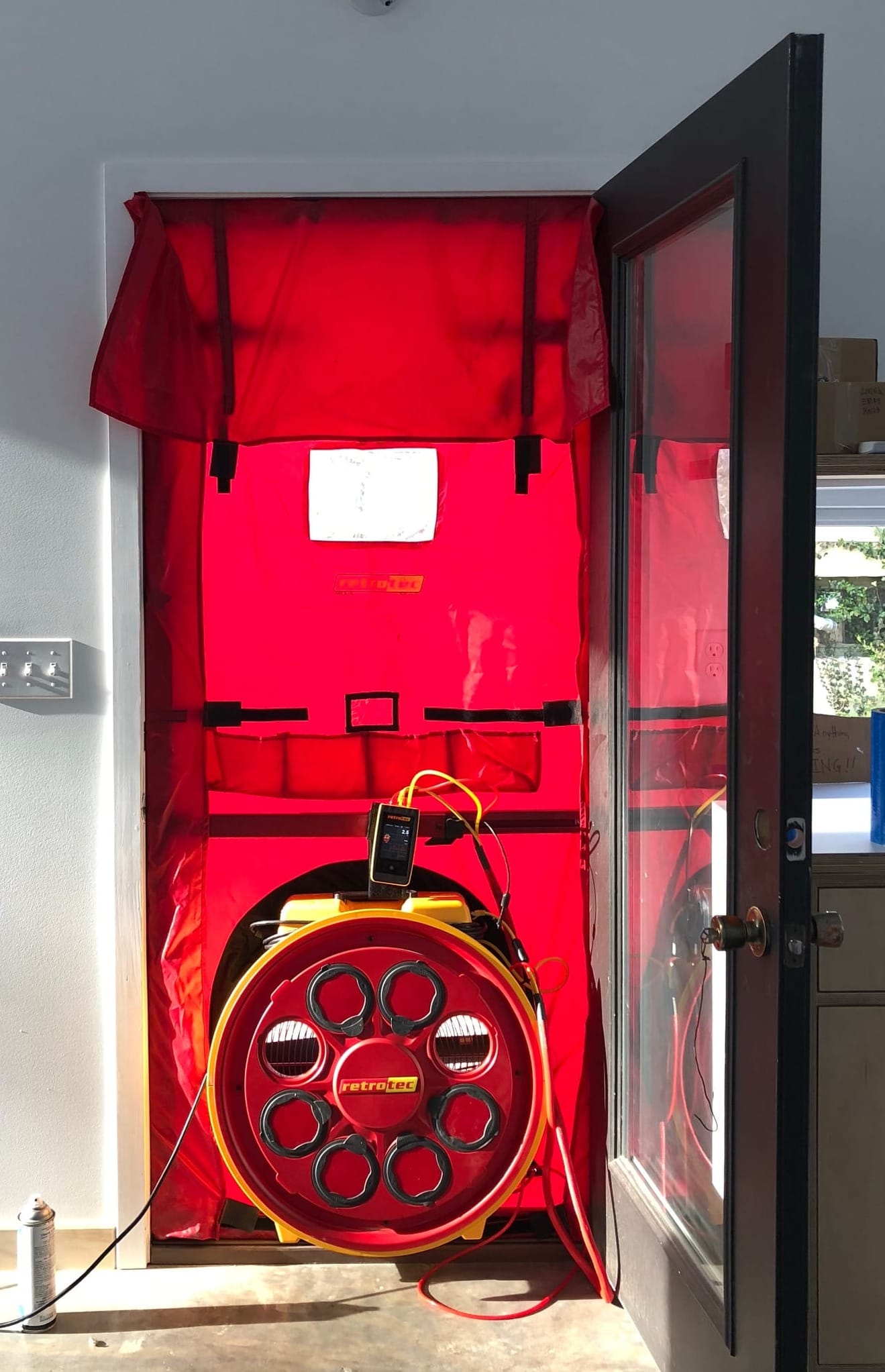Energy Coach - July
It's here - we're in the middle of winter, and most of us are feeling the chill, as well as the pain of high energy bills. Here's our roundup of what you can do to shrink your bills while keeping your home's comfort levels high.
Air leaks are the biggest factor in your home's thermal efficiency. Blower door testing is the best way to measure how leaky your home is, and find where the gaps are, so you can seal them off.

Understanding how well your home is sealed against air leakage is crucial for home energy efficiency. 'Blower door' testing is the gold standard for measuring air tightness for any building, including for your home.
In this article, we will explore what blower door testing is, its importance, and how it can benefit homeowners.
Blower door testing is a diagnostic method used to measure the air-tightness of a building. It involves using a powerful fan (the blower door) mounted into the frame of an exterior door. The fan pulls air out of the house, lowering the air pressure inside. The higher pressure outside air will then flow in through all the cracks and openings, allowing an auditor to identify areas where a building is leaking.
The average atmospheric pressure at sea level is 101,325 Pascals, so 50 Pascals is a relatively small pressure differential.
Identifying and sealing leaks will significantly improve a home's energy efficiency, as uncontrolled air leaks can waste a large portion of a home’s heating and cooling energy.
Air leaks can lead to drafts, inconsistent temperatures, and issues with moisture. Sealing these leaks will improve overall comfort and reduce the potential for mould growth and other health concerns.
Blower door testing can help prolong the structure’s durability by preventing unwanted moisture from entering the building envelope.
Close all the external windows and doors, open all interior doors, and turn off all combustion appliances to avoid creating a dangerous situation with back-drafting.
The 'air changes per hour' measurement requires that the internal dimensions of the building are known so that it's possible to calculate the test envelope volume.
The blower door unit is installed in an exterior door frame.

The blower door is designed to fit into the door frame precisely and is sealed to prevent air leakage. The blower door consists of a calibrated fan, a frame and a panel that closely fits into the doorway, plus pressure gauges and an airflow manometer to measure the pressure inside the building and the rate of airflow.
The fan is turned on to depressurize the home. As the fan operates, it draws air out of the house, lowering the indoor air pressure down to the recommended test pressure differential of 50 Pascals below the external atmospheric air pressure.
The auditor then moves through the house, often with a smoke pencil and/or thermal camera, to detect where air is infiltrating into the building, highlighting the areas to work on for sealing up the gaps and cracks.
The results are quantified in terms of air changes per hour (ACH) or cubic meters per minute (CMM) of air leakage. This data measures how "tight" or "loose" a building is.
There is no strict minimum requirement for home air leakage, but a 'good' result is considered to be five ACH@50Pa, which means five complete air changes per hour at 50 Pascals pressure differential.
Homeowners can reduce their heating and cooling costs significantly by identifying and fixing leaks. Blower door testing is the best way to identify those leaks.
Sealing leaks can reduce the influx of dust, pollen, and other outdoor air pollutants.
Eliminating drafts and cold spots increases the comfort level within the home.
Blower door testing can prevent structural damage caused by mould and rot by controlling moisture ingress.
While there are DIY kits available, professional blower door testing is generally more accurate and insightful. Professionals have the experience and tools necessary to conduct the test, interpret the results and provide recommendations.
Blower door testing is invaluable for anyone looking to improve their home’s energy efficiency. It goes beyond simple energy savings; it’s about ensuring a comfortable, healthy, and durable living space. As we move towards more energy-conscious living, understanding and applying techniques like blower door testing will become increasingly important for homeowners and builders alike.
Savings as a Service is the blog site and newsletter from Bill Hero. Subscribe now and get your energy savings tips and information delivered fresh to your inbox every month.